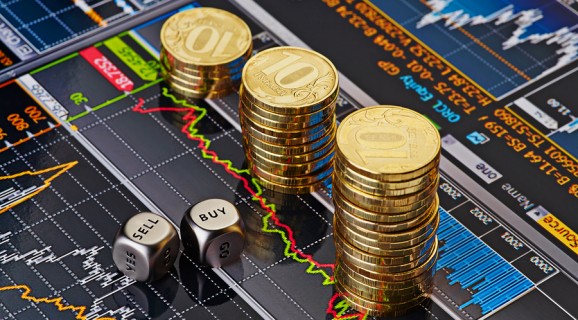
Precious metals are a lucrative category of investments that come with a unique set of particular investing qualities. There are three main categories of precious metals: gold, silver and the platinum group metals (PGMs), including platinum, palladium, rhodium, iridium, osmium and ruthenium. Platinum and palladium are the most common of PGMs and are also commonly used as investment metals.
Gold is the most lucrative, most rare and most expensive of the precious metals. Silver will generally follow the trends of gold at a much lower price point. For example, during the gold rush, it was common knowledge that sixteen ounces of silver was worth one ounce of gold. Now, the ratio is a bit larger, roughly about one ounce of gold to 60-70 ounces of silver, or, to put it another way, when gold is at around $1,400, silver hovers at $25.
The platinum metals operate under a somewhat different sort of market circumstances, since they are considered more “industrial” metals, while gold and silver are primarily used for investment. For the purposes of this article, we will consider platinum and palladium as investment metals, though industrial uses are somewhat important in determining price points of all precious metals, since they all do have industrial uses.
Here are the top 5 factors influencing the price of precious metals:
1. Major world currencies – The health of first world nation currency systems is the single biggest factor determining the price of precious metals. The more unstable a nation’s currency, the more appealing are precious metals. Because gold and silver also double as currencies, they become more popular during times of high inflation, recession or economic instability, as a hedge fund against faltering world currencies. Their tangible and historical value become desirable as a back up store of wealth in case the dollar, euro, yen or rupee fall on hard times. In fact, the gold-dollar relationship is quite directly an inverse relationship.
2. Global crisis – In the same way that faltering world currencies bolster the prices of precious metals, geopolitical crises also cause traders to take safe haven in the reliable and consistent wealth value of precious metals as a way of protecting their assets. Conflicts in the Middle East often spur resurgence in gold and silver.
3. Low Yields on Traditional Investments – When, in the past few years, bonds and other conventional investments have produced low yields, some traders tend to venture into riskier trading ground, such as precious metals, especially when they are performing well, as they have been for a while.
4. Rising Market Economies – The industrializing nations of India and China have a fair impact on the price of gold and silver, since these countries are currently in economic growth periods and also highly prize the cultural value of precious metals. As these nations gain in wealth and status, they tend to buy more gold, thereby increasing the demand and raising the price.
5. Industrial Trends – Though not as volatile for gold and silver, all precious metals are influenced by the availability of the metal above ground; the scarcer the metal, the higher the price. Factors that can increase or decrease this availability include metals being used in industrial facilities, and therefore unavailable for investment. Mining, and new entrances of metals to the market, can slightly influence price, though generally not by much. Many have argued that industrial trends do not influence market price, but recent industrial developments in India and China have made it clear they do.
Other Factors
Precious metals trading is a complex and exciting industry, so there are myriad other variables at play on any given day in the marketplace. Here are a couple more aspects to consider:
• Speculation: Futures trading in the precious metals realm relies heavily on traders’ and analysts’ speculation about what the metal will do in the future, which can influence decisions to buy or sell.
• Inter-relationship of metals: As mentioned before, because the precious metals are all distinct yet related, the price of one may influence the price of the others.
• Inflation: With high inflation rates, many traders decide to convert their currency into precious metals so as to stretch out the worth of their assets in the long run.
